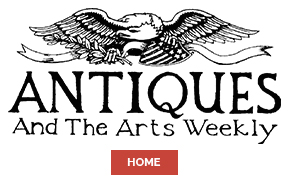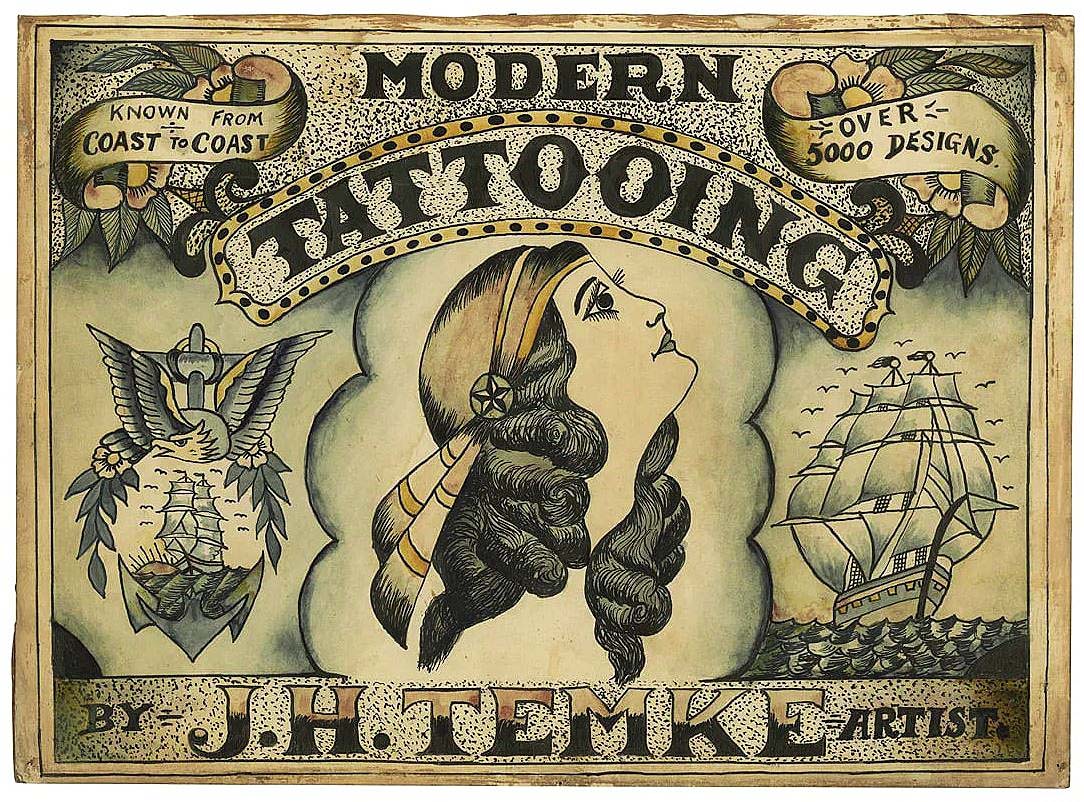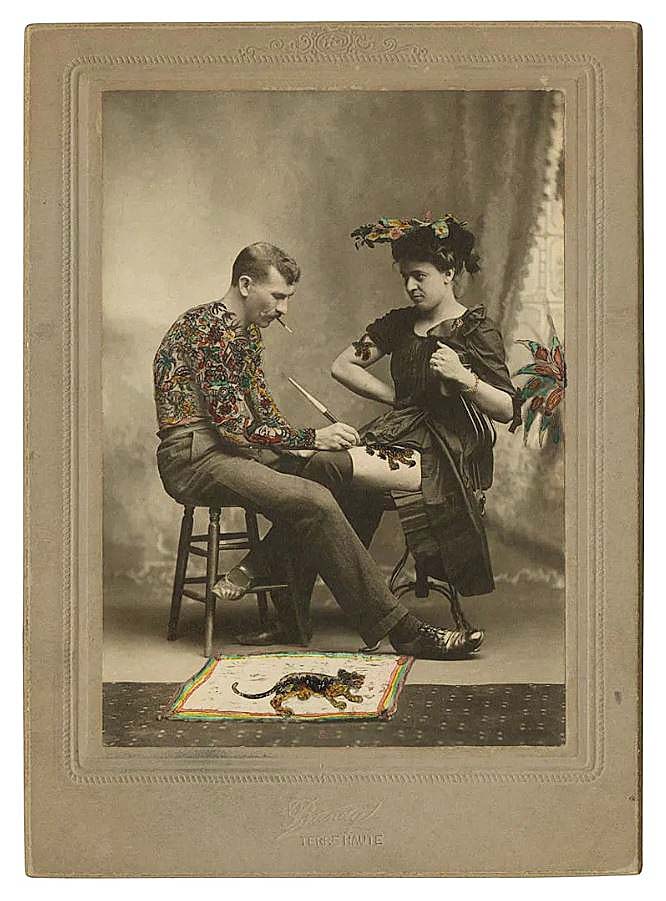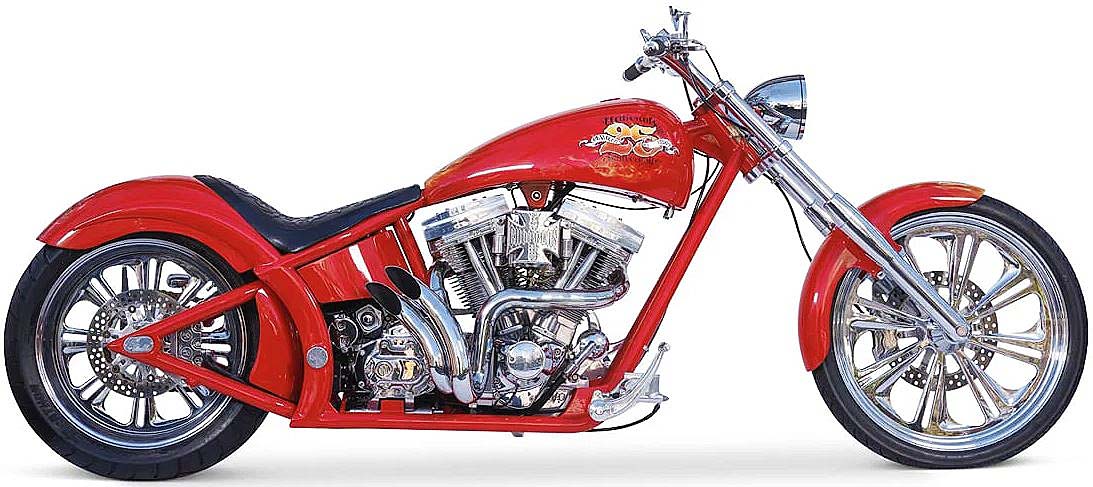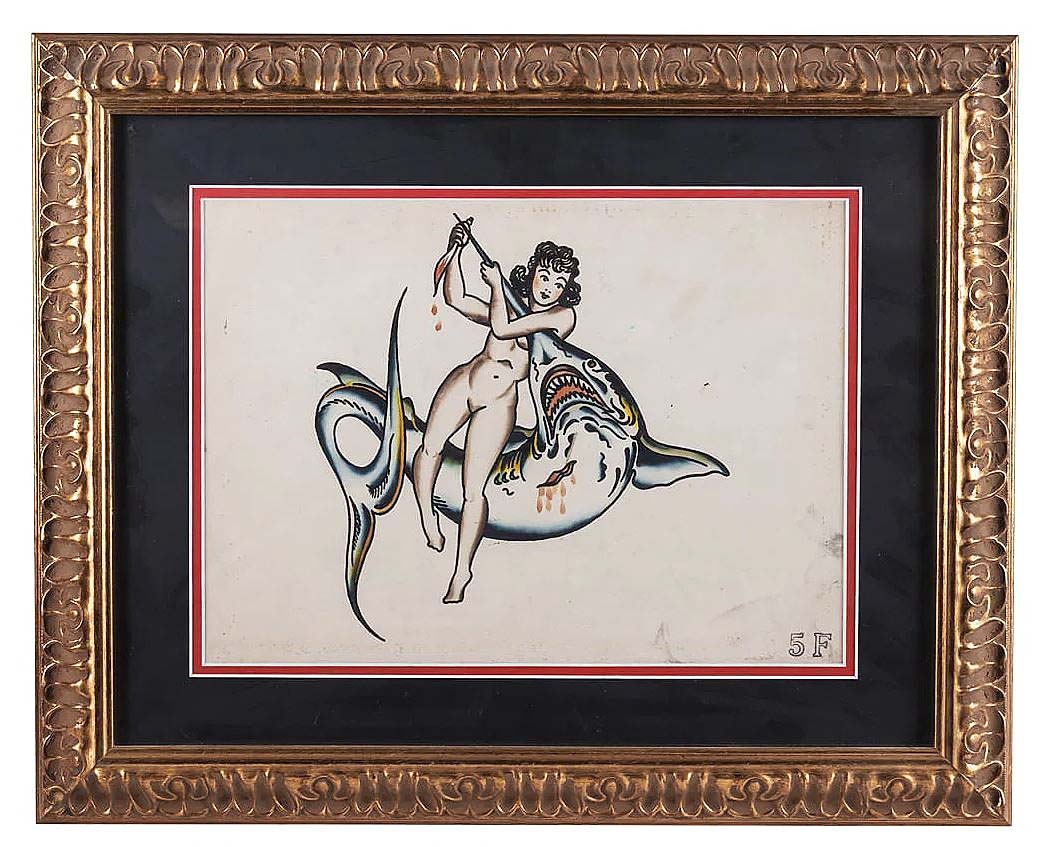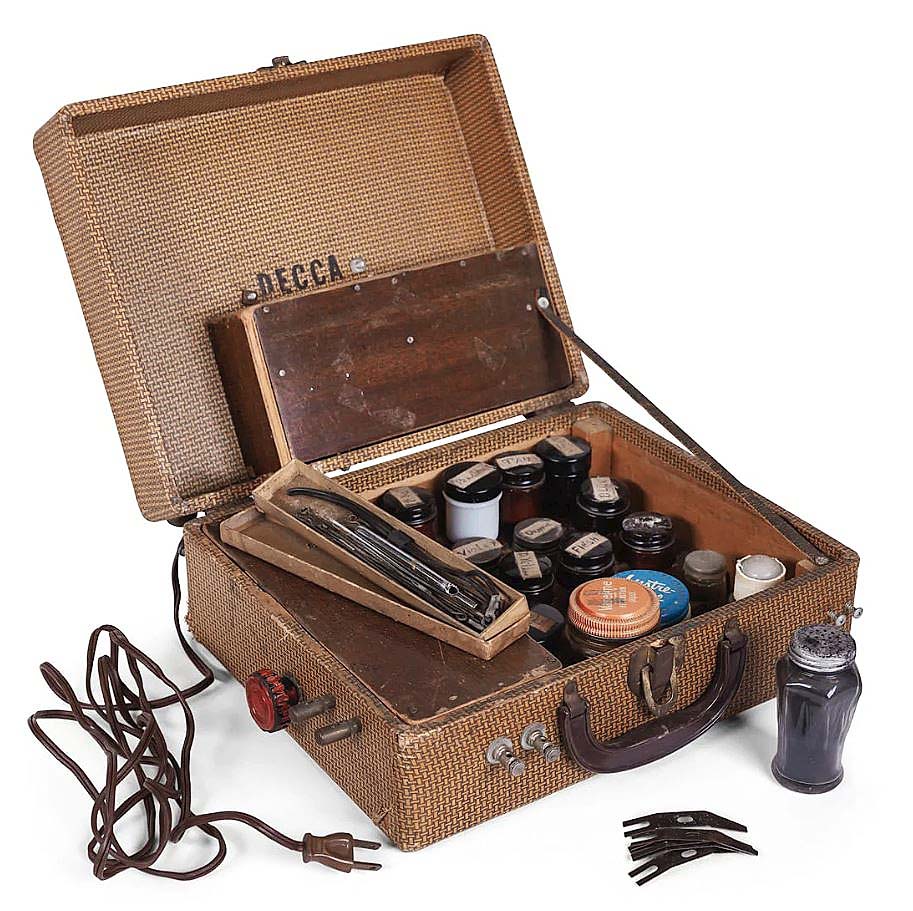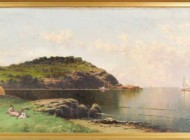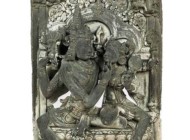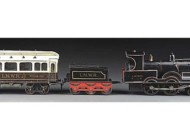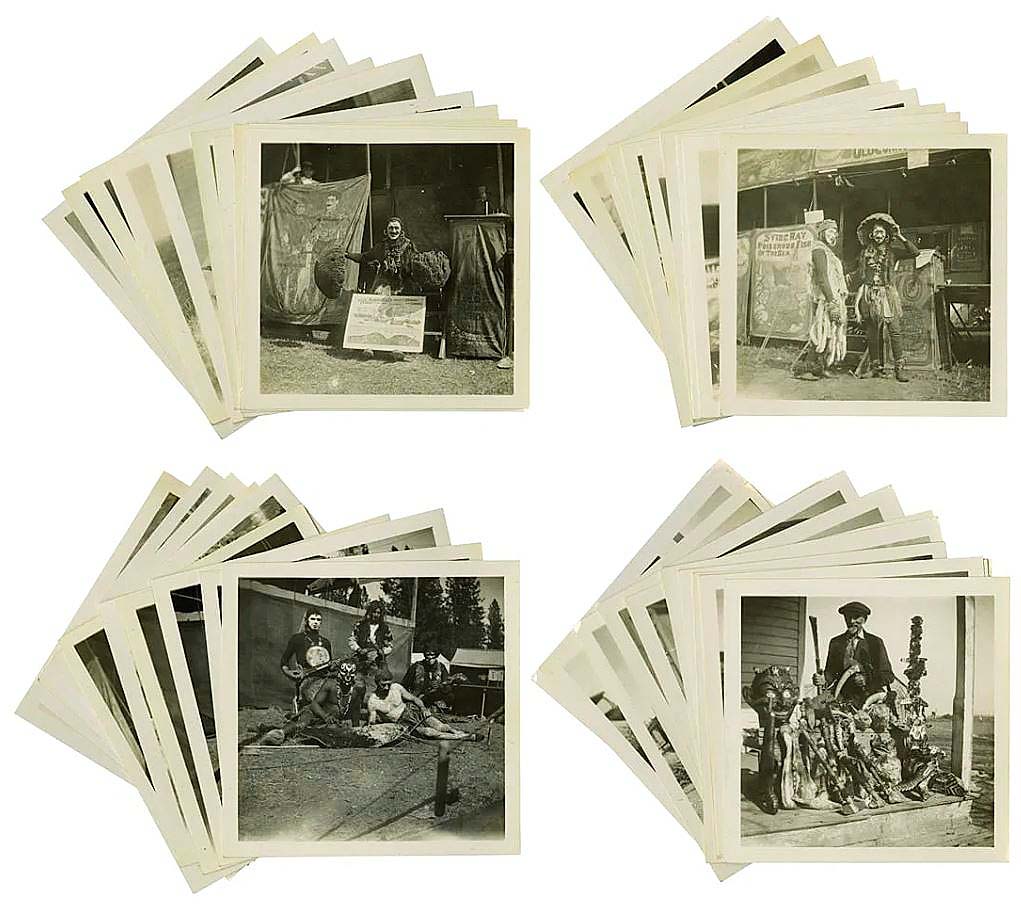
Conservatively estimated at $600/800, this archive of Gus and Maud Wagner photos sold for $17,720 to an international institution.
Review by Madelia Hickman Ring
PORTSMOUTH, N.H. — In only his third auction dedicated solely to Tattoo, Circus, Sideshow & Curiosities, Derin Bray assembled nearly 270 lots that, when it was conducted on July 13, was nearly 99 percent sold by lot. He noted that the auction received more institutional interest than the previous two, which he credited to universities and museums “collecting things that are under-represented in their collections, or marginalized groups. This stuff fits into that.”
He continued, “Overall it was a great sale. It’s an emerging market, with an audience that’s still comparatively young but one that is becoming a recognized field of study, which is exciting and encouraging. We get new bidders for each of these sales; I’ve come to expect that people into this stuff will find me and join bidders I already know.”
The auction catalog described the early American professional tattoo artists to be “by nature and necessity, freewheeling, versatile beings who found promise and profit on the edges of conventional society. For sheer style, appetite for life and creative power, though, none matched August ‘Gus’ Wagner… whose restless genius led him to channel his experiences as a world traveler into fantastical art and homemade spectacle.” Appropriately, an archive of 49 photos of Wagner and his family, taken between the 1910s and about 1940, earned top-lot honors and was purchased by an institution overseas, for $17,720.
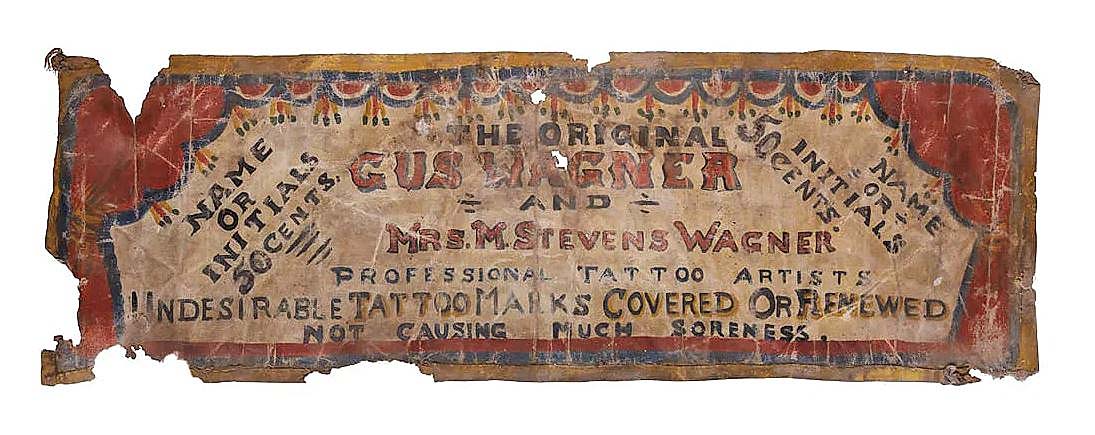
This sideshow banner was historically important, being the earliest known banner from the tattoo artist’s period and the first banner to advertise the first woman tattoo artist. An East Coast collector prevailed over competitors and won it for $7,380 ($5/10,000).
Other top lots connected with the Wagners — Gus and his wife Maud — included the couple’s circa 1905 hand-painted sideshow banner that Bray said was the earliest known banner from the tattoo artist’s period and the first promoting Maud, the first woman tattoo artist. The buyer — a collector on the East Coast — was “over the moon” to have won it, for $7,380.
The South Street Seaport Museum in New York City has Wagner’s travel album of tattoo designs as well as his tattooing tools, so Bray was delighted that it acquired, for $5,842, a painted cabinet card of the Wagners.
Finishing in second place was a motorcycle custom made by motorcycle maker Jesse James and tattoo artist Jack Rudy (1952-2025), who is credited with popularizing fine-line tattooing. The cycle had been made in 2004 for Flo and Don Makofske, who started a tattoo supply business in the 1970s, to commemorate the 25th anniversary of the first convention of the National Tattoo Association. A California collector paid $13,530 for it.
Another top lot from the Makofske’s collection was a large hand-painted sheet of tattoo flash by Jesse Frederick Barber (1879-1970), who worked in Detroit. Depicting US Navy and other patriotic motifs, it sold to a collector for $7,995.
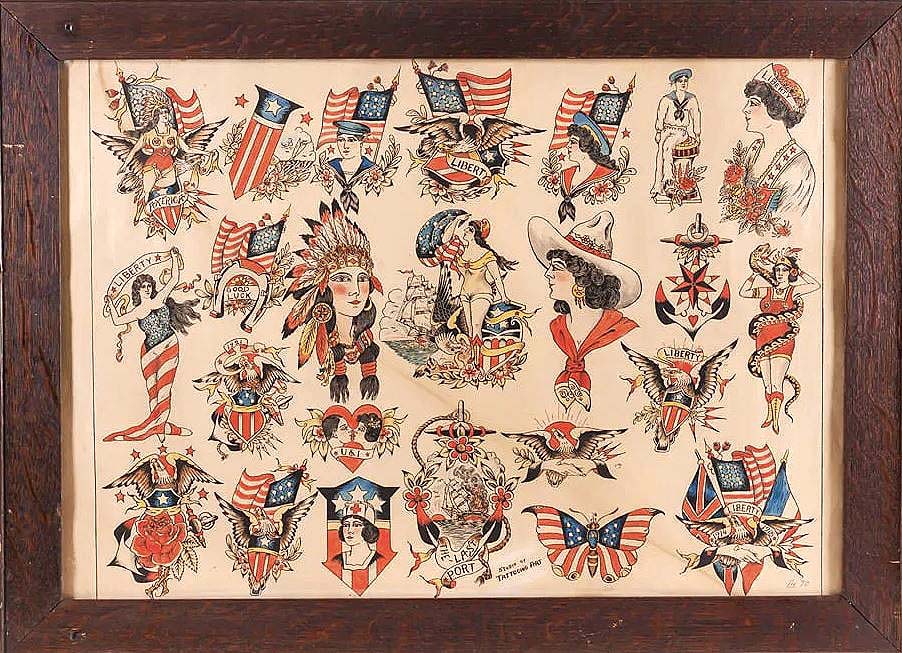
“It’s a big sheet, and early, both of which are hard to find, and just crammed with patriotic designs,” Bray said of this 21½-by-29½-inch hand-painted sheet of tattoo flash by JF Barber, circa 1921. A private collector snapped it up for $7,995 ($2,5/3,500).
Eighteen lots in the sale were made by Norman Keith “Sailor Jerry” Collins (1911-1973), who Bray observed to be “probably on the Mount Rushmore of early American tattoo artists; you can’t go to a tattoo shop without seeing copies of his flash on the walls. Most of the originals are locked down in private, institutional or corporate collections — it’s rare to see these on the market. They’re going all over the country.” Leading the group of Collins’ designs was one of a woman with a swordfish or shark; it tripled its high estimate to bring $10,880.
An important lot that was unknown before the sale was an early tattoo shop sign by John H. Temke (1878-1949) that was consigned to sale by a Cincinnati man who did not know much about it other than his parents had owned it “ever since he could remember. It’s very rare to find early signs,” Bray observed. It brought $6,150 from a private collector.
If pieces connected with known tattoo artists have surfaced because of Bray’s auctions, so too have items linked to lesser or unknown artists. Such was the case with a traveling tattoo kit and flash used by Pennsylvania tattoo artist, Charles Dear, who worked in the Allentown area between 1930 and 1960. “I don’t know too much about Dear. So many people who tattooed were itinerant and not always recorded; they’d show up at any carnival that would hire them. He took a Decca portable record player and removed the phonograph component.” It multiplied its high estimate five-fold and sold, to a collector, for $4,305.
Bray’s next sale is scheduled for August 23 and is titled Shaker Baskets and More: Collection of Martha Wetherbee.
Prices quoted include the buyer’s premium as reported by the auction house.
For information, 603-427-8281 or www.brayco.com.
